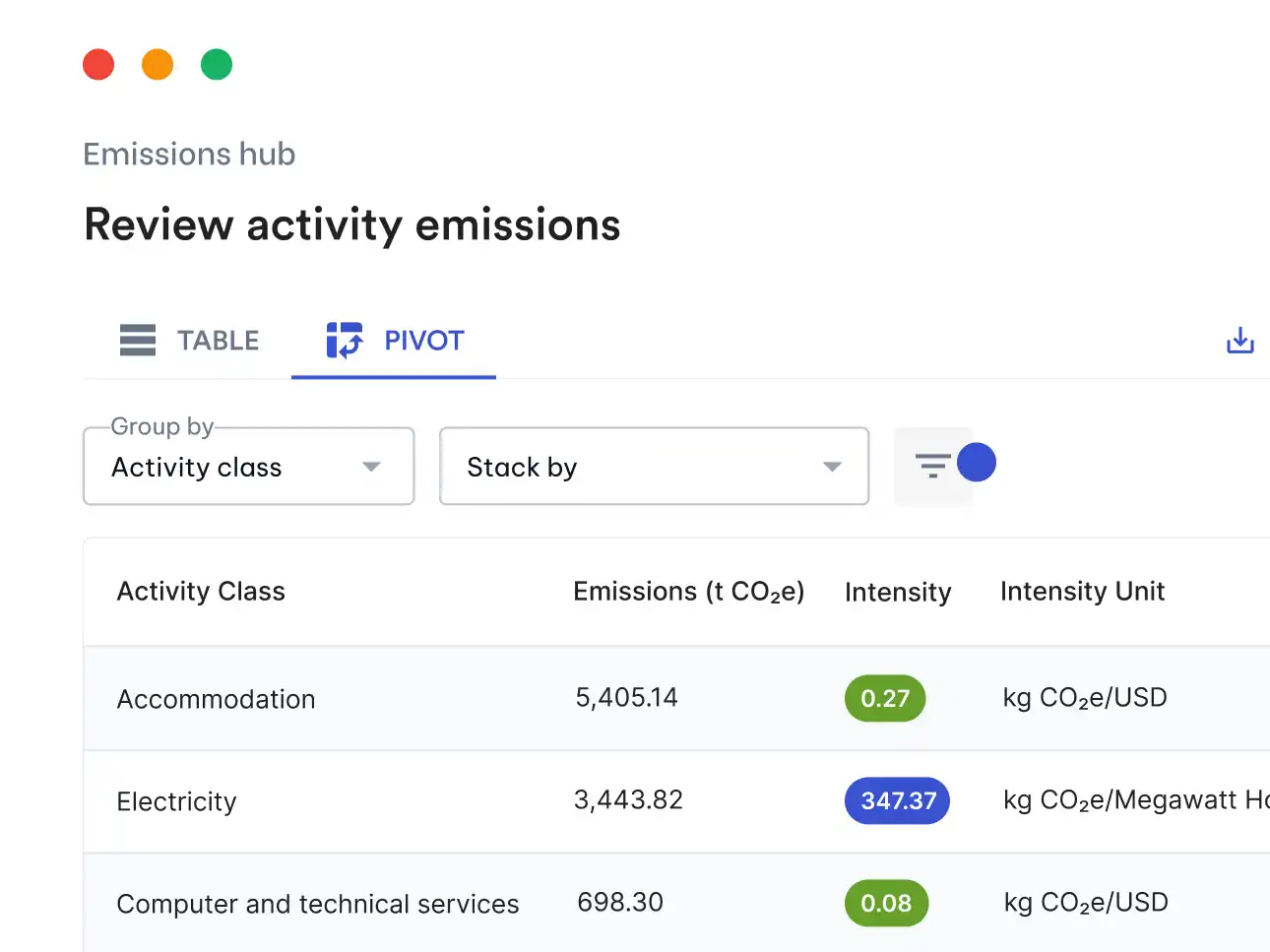One of the recurring challenges in sustainability reporting is the mistaken assumption that emissions data should sit squarely with the finance team. While finance plays a role — especially in regulatory reporting — the actual work of gathering and managing emissions data cuts across departments. If you rely too heavily on finance, momentum stalls. If you build shared ownership, you get real traction.
Recent conversations with Avarni clients — spanning sectors from logistics to local government— highlight seven practical ways to shift responsibility beyond finance and create sustainable internal ownership.
Establish clear roles and responsibilities using the RACI framework
Without clarity, things fall through the cracks. Several organisations we've spoken to are using a RACI framework to define who’s Responsible, Accountable, Consulted, and Informed for each emissions data task. It might sound overly formal, but it works. When roles are clearly defined, stakeholders quickly understand who’s driving what. Instead of defaulting to finance, responsibility gets distributed across business units based on data ownership and operational control. This creates alignment and removes ambiguity from the process.
Engage and train stakeholders early
The quality of your emissions data hinges on the people who handle it. In a recent demo, the point came up that reviewing emissions calculations needs the same rigour as reconciling financial transactions. That’s not going to happen without targeted engagement and training.
Teams need to know what "good" looks like. That includes basic training on emissions accounting principles, practical instruction on how to validate and review data, and ongoing onboarding as new team members come in. Up-skilling doesn’t need to be overwhelming, it just needs to be consistent and role-specific. The sooner teams feel confident in what they’re being asked to do, the sooner they’ll own it.
Automate wherever possible to reduce friction
If teams have to manually gather and enter data from multiple systems, ownership tends to stay with the few people willing to do repetitive admin work, and that’s not scalable. Automating data collection is critical. When emissions data already exists in systems like utility portals, procurement tools, or ERPs, it should be pulled directly from those sources. Integrations not only cut down on manual effort and reduce errors, but they also remove a key psychological barrier. Most teams won’t engage with a process that feels like extra admin. Automation doesn’t remove the need for oversight, but it creates space for better analysis and more meaningful engagement from the teams that actually own the data.
Frame emissions as a business-critical function, not just compliance
In early-stage conversations, sustainability initiatives are often framed as “compliance” or “ESG.” But the tone shifts quickly when the focus moves to real business impact. Emissions data is no longer a nice-to-have — it’s becoming as essential as financial data. With mandatory ASRS reporting, increasing customer pressure from major supply chains, and growing investor scrutiny, managing emissions is now a core business function. When sustainability is treated as a reporting task, it leads to checkbox behaviour. But when it’s positioned as a strategic priority, it drives genuine ownership across the business.
Offer fractional sustainability support during the transition
Not every organisation has an in-house sustainability team. That’s fine so long as they have access to expertise. Many of our prospects value Avarni’s role as a kind of fractional Chief Sustainability Officer. In practice, that means we guide internal teams through complex decisions, review methodology choices, and provide continuity while internal capabilities are being built. It also de-risks the handover process. Teams are far more likely to take responsibility if they know they’re not doing it alone. Fractional support doesn’t just fill a capability gap, it builds confidence and accelerates buy-in across the business.
Work directly with data owners, not just finance
Emissions data is inherently cross-functional. The teams managing energy, transport, procurement, and waste already hold the right data, so asking finance to collect everything is inefficient. The most effective approach is to engage directly with the people who manage the underlying data: energy managers for utility bills, procurement teams for supplier spend, and so on. Going straight to the source speeds up onboarding and gives operational teams a clear role in the process. Finance still plays an important part, particularly when it comes to audit and disclosure, but the data itself should remain with those who generate and manage it day to day.
Drive accountability through executive sponsorship
You can’t build lasting ownership without top-down support. The conversations that go well almost always include a clear executive sponsor: someone who can link emissions data management to broader business priorities.
When emissions work is tied to board-level objectives, it stops being seen as “extra.” Teams are more likely to engage when they know it matters to senior leadership. It helps when leaders make that expectation explicit: emissions data is a strategic priority, not just a sustainability checkbox.
The goal isn’t to create new work streams. It’s to align emissions responsibilities with existing ones, and then elevate the visibility and urgency of getting them right.
Summary
- Use the RACI Framework to assign clear roles and eliminate confusion about emissions data responsibilities.
- Train and engage stakeholders early to build confidence and consistency in data management.
- Automate data collection wherever possible to reduce manual effort and encourage broader team participation.
- Position emissions as business-critical, not just a compliance obligation, to gain internal buy-in.
- Provide fractional sustainability support to ease the transition and help teams take ownership with confidence.
- Start with operational data owners, rather than finance, to streamline access and build distributed accountability.
- Secure executive sponsorship to make emissions a visible, strategic priority and reinforce cross-functional engagement.
Building a sustainable emissions data management process is about embedding responsibility where it naturally belongs. With the right structure and support, internal ownership becomes not just possible, but expected.
Let Avarni help you
If your organisation is grappling with internal ownership of emissions data, we can help. Get in touch to see how Avarni supports teams in building the systems, clarity, and confidence needed to manage emissions data at scale.





